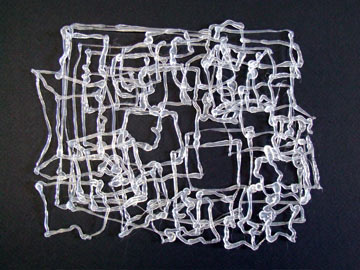
Many thanks to those who have helped get the Teaching with Contemporary Art column off to a smooth start! Recently, a few friends and colleagues have mentioned (even e-mailed) about the fact that, well, while Season 4 of Art:21 has won quite a few prestigious awards, the selection of artists chosen can be difficult to transition into the classroom. As educators, how do we get our collective heads around teaching with Season 4 artists such as Mark Dion, Alfredo Jaar, Ursula von Rydingsvard and Laurie Simmons? These aren’t artists that lend themselves easily to K-12 or university-level curriculum, particularly if the course is production-based. How can artists like these, as well as artists such as Ann Hamilton (Season 1), Martin Puryear (Season 2), and Fred Wilson (Season 3) help us work with students in our classrooms?
First… they can help us redefine and expand on what art is and what it’s becoming in the 21st century. There aren’t too many neat little projects that fit perfectly with what some of these artists do, but the segments and related materials on art21.org help us work with students to consider new possibilities for subject matter and ways of working with traditional and non-traditional media. These segments can inspire writing in the classroom just as well as Elizabeth Murray may inspire students to paint in new ways. They can be the catalyst for spirited debate much like Trenton Doyle Hancock can act as a starting point for understanding cartooning or how artists develop/illustrate alter-egos. Mark Dion can teach about the relationship between art and ecology, as well as blurring the line between artist and curator. Alfredo Jaar can teach about public art and how contemporary art often needs a particular setting much like a great work of fiction. Ursula von Rydingsvard teaches how an artist today can create work that relates to landscapes, the human body and psychological states… sometimes simultaneously. And Laurie Simmons can teach that there is a difference between photographers as artists and artists that use photography as a tool.
While it’s hard to incorporate the ever-increasing number of artists that can meaningfully inspire and help guide students, it’s hard to NOT include artists that will help them open up definitions and engage in dialogue about what art is and what constitutes an artist to begin with. Bringing these artists into discussions and/or socratic seminars in the art classroom can have surprising and wonderful benefits. Is it easy? Never. Some days are easier than others. But it’s always worth it. I can tell you stories…..
Image: Untitled Hot Glue Drawing by Karyl DelMundo




Pingback: Second Look at Art21 Blog